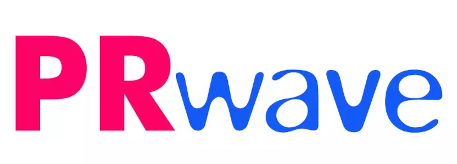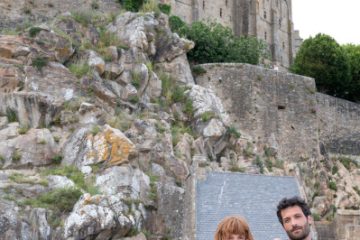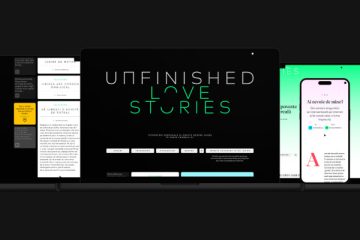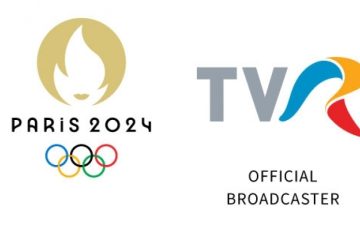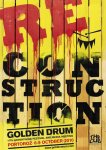 Please list 3 of your favorite advertisements – globally and your own. Why those?
Please list 3 of your favorite advertisements – globally and your own. Why those?
A film I’ve always loved is the commercial for the Peugeot 206 called ‘The Sculptor’, made by Euro RSCG Milan in 2002. You must know the one – the young Indian guy who gets an elephant to sit on his old jalopy (amongst other methods) so that it ends up looking like the car of his dreams. It’s still there on YouTube, so if you’ve never seen it, go and check it out. Everything about it – the story, the editing, the music, the casting – is simply frame-perfect. Apart from anything else, it stands as a monument to the brave and imaginative client who said ‘yes’ to such a wonderful piece of work.
As you so kindly allow me to nominate one of our own agency’s ads, my current Y&R favourite is a poster from South Africa for the Microsoft X-Box game called ‘Need For Speed’. It’s an idea with a lovely, modern twist: the agency put up posters in view of speed cameras around Jo’burg. When law-breakers received a speeding ticket through the post, there in the official police photo (that proved their car was over the limit) was the poster in the background saying ‘Need For Speed?’ with the X-Box logo. What a fantastically impactful way to get your brand across – and of course the effect of the campaign was magnified by all the media coverage it got (that’s a process I once heard described as ‘publitising’). I’m not surprised it picked up a Gold Lion at Cannes this year.
For my third choice, I go back to a press ad from around 1960 (yeah, I’m so old, when I try and blow out the candles on my birthday cake, I get driven back by the heat). It’s the famous VW ad from DDB New York that many think changed the way advertising was created forever. The visual is simply a shot of a brand new shiny VW Beetle, looking perfect. The one-word headline underneath reads ‘Lemon’ (‘Lemon’ is American slang for a car that’s full of manufacturing faults, or a so-called ‘Friday car’). Reading the copy, it turns out the only fault the car has got is an imperfect piece of chrome trim on the glove compartment lid – and for VW with their amazing quality control standards, that’s a calamity. But what was revolutionary about this ad was the tone of voice (wittily self-deprecating, not boastful) and the art direction (no-one had seen advertising look so stark and simple before). It’s not just a great ad, it’s an historically important one.
Who do you rate as being the top 3 companies (clients) and agencies – globally and your own? And why?
Given my last answer, my first nomination has to go to DDB New York in the late fifties and early sixties. My creative hero (and many other people’s) is its founding creative director Bill Bernbach, who transformed advertising by the simple idea of putting an art director and a copywriter in the same room together. Until he came along, writers and art directors worked in separate departments and never even met – the writer simply wrote the copy, and whichever art director (or ‘visualizer’) was free downstairs, he was asked to illustrate it. By forming ‘creative teams’, Bernbach ovenight created conditions where the words could ‘argue’ with the pictures rather than simply repeat them (see ‘Lemon’ above). And thus the intelligence of advertising creativity took a giant leap forward, attracting a whole new generation of smart people into the business. It’s what was later to be known as ‘the creative revolution’. I’m sorry if some of you know all this story already, but it’s a history lesson we must never forget. And I could argue that Bill Bernbach is indirectly why you came into advertising in the first place.
My next favourite agency doesn’t even exist any more – it was called Collett Dickenson and Pearce (or CDP), and it was without doubt the finest British agency ever. The body of work that was produced there is just astonishing: ‘Happiness is a cigar called Hamlet’, ‘Heineken Refreshes the Parts Other Beers Cannot Reach’, Stella Artois ‘Reassuringly Expensive’, Fiat Strada ‘Handmade by Robots’, the Benson & Hedges ‘Surreal’ campaign – the list just goes on and on. They created work that didn’t just look beautiful but was invariably beautifully written, too. CDP loved and revered the written word in a way you just don’t see now. That’s a theme I intend to touch on in a presentation I’m giving at the Golden Drum entitled ‘Don’t Forget to Write’.
Hey, I’m an ad man, so agency no. 3 is another plug for our own agency. We’ve got lots of great Y&R offices around the world, but one of the most innovative ones is without doubt Shalmor Avnon Amichay/Y&R in Tel Aviv. They are just an amazing ‘Lions machine’, creatively led by Gideon Amichay, and they are forever trying to find new and untried ways to get through their audience. For instance, to dramatize the fact that the AIDS virus is inescapable, they ran a commercial simultaneously on every single Israeli radio station – challenging the listener to switch stations, who of course would find the same commercial running whatever button they pressed on their radio. This is an agency that believes that being simply ‘creative’ is no longer enough – you have to do new things in ways that no-one has ever seen before, using media, on-line, PR, ambient, whatever.
If you ask me to nominate my favourite client company, over the years it’s without doubt been VW. Here’s brand that wasn’t just there at the beginning of the creative revolution, but has remained at the forefront of it for the last 50 years – an amazing track record. Year in, year out, VW is there at Cannes and all the other award shows with work that’s witty, smart and compelling. And not just from one country, but from all over the world.
Do you believe advertisement? Do you go and buy when you see a good ad? Do you have any brands that you love? Which and why?
Sure I believe in advertising – I don’t think I could have worked in this business for 34 years without having at least some faith in what I’m doing! I’m sure we’re all familiar with the usual arguments in favour of our industry: it’s the outward sign of a free society, it means we have a choice, it oils the wheels of our economies, it creates jobs, it occasionally brightens our media landscape with great work and so on. And yes, it does have an effect on me – there are brands out there I feel well-disposed towards simply because they’ve spoken to me in a way that’s smart, or informative, or entertaining, or emotionally moving (like the ones I’ve already mentioned).
But what I emphatically don’t like about advertising is the huge proportion of what we create that’s so mediocre. As an industry, I feel we’ve been given privileged access to this amazingly powerful machine called the mass media, and it seems that we (or our clients) quite often abuse that privilege by polluting it with work that’s mindless, patronising, dull or plain ugly.
What do you regard as being your biggest achievement?
If it’s work you’re talking about, it’s probably a Heineken film I wrote called ‘The Water in Majorca’, which our UK trade magazine Campaign once voted as one of the 10 funniest British commercials ever made (well I’m not sure about that, but thanks anyway). I’ll probably be talking about this film in my talk at the Golden Drum, because it has a very interesting background story attached to it (a bunch of lawyers come out as unwitting creative heroes). But outside of work, the ‘creative team’ that I’ve formed with my wife of 24 years has created four fantastic kids who exceed by a million miles anything I ever produced at work. I don’t want to sound too sanctimonious, but once you have kids, you realize what really matters in this world. In fact, an old boss of mine once told me: ‘Adrian, remember that advertising is a very big answer to a very small question’. And I’ve never forgotten that.
What do you do for inspiration?
Inspiration for me comes in many forms, but here are two that are particularly important to me. Firstly, it’s the person sitting opposite me at my desk – my art director. I’ve always felt the two of us create this ‘third person’ who’s much smarter, quicker thinking and with better creative instincts than either of us would have on our own. Secondly, and maybe surprisingly, I get inspired by creative restrictions. I find the more impossible the brief looks, the more likely it is we’ll come up with a great idea. I sometimes give a talk entitled ‘Thinking Inside the Box’ which is all about this phenomenon.
Have you written any books, if not do you plan to? What is/would it be about?
No, I’ve never written any books – in fact nothing longer than advertising speeches. But if I did write anything, I’d probably try my hand at a radio play. Peter Souter, the ex-creative director of Abbott Mead/BBDO in London, did exactly that, and is now enjoying a successful career as a writer of TV shows in the UK. I’m insanely jealous.
What projects do you have in the pipeline?
If I hadn’t gone into advertising, I think I’d have enjoyed being a product designer. In fact, one pipedream I have is to design a really classy looking portable radio – there’s nothing but cheap plastic crap out there. And how nice would it be to hear a radio play that I’d written being broadcast on a radio set that I’d designed?
What are your views on advertising school? Do you think someone can get into the field without educational experience in a school environment? Can you speak from your own experience?
I never went to an advertising school (in fact I did a degree in Film and Photographic Arts) but in many ways I wish I had. I think the best schools are incredibly important to our business – particularly as agencies themselves don’t have the time or money to train their own people in the way they used to. My only concern is that the schools produce more well-trained students than there are available jobs out there. But that’s not to say you can’t be a successful creative coming from a different non-advertising background. Some of the best copywriters and art directors I’ve known have come from fields like law, teaching or music.
What are your views on advertising festival? What is their main benefit for the visitor? Do they have a future?
Advertising festivals like the Golden Drum are the absolute lifeblood of our business, and I’m sure they’ll never disappear from our industry. Awards are how we creative people measure our success and gain peer approval – it’s how our careers move forward, simple as that. And coming to shows like this inspires us, too – we all know that feeling of coming away from an awards show, usually empty-handed, and furiously determined to do better next year.
The only downside to the award show scene I can see is the continuing tendency for ‘scam’ or ghost work to be entered – and win. It’s happening all around the world, like a global virus. This is an issue that arouses huge amounts of controversy, I know, with some people convinced that scam work has every right to win awards. But to me it’s like competing in the Olympics with performance enhancing drugs.
 ABOUT ADRIAN HOLMES, EXECUTIVE CREATIVE DIRECTOR, Y&R EMEA
ABOUT ADRIAN HOLMES, EXECUTIVE CREATIVE DIRECTOR, Y&R EMEA
After graduating in Film and Photographic Arts at Central London Polytechnic, Adrian Holmes began his career as copywriter at Grey Advertising in 1976. In January 1982 he joined Lowe Howard-Spink, just three months after the agency was founded. Four years later, he left the agency to work at Saatchi, and later CDP, then joined Wight Collins Rutherford Scott as Creative Director. In 1989 he returned to Lowe as Joint Creative Director of the London office, becoming the network’s Chief Creative Officer in 1999. In September 2005 he was appointed Executive Creative Director of Young & Rubicam EMEA.
Adrian has won numerous awards at festivals all over the world, including Cannes, D&AD, The One Show, Campaign Press Awards and British Television Awards. Accounts he has worked on include Heineken, Stella Artois, Smirnoff, Plymouth Gin, Hamlet, HSBC, Saab, Vauxhall, Citroen, Nestlé, Albany Life, Army Officer Recruitment and numerous Unilever brands.
In 1994 Adrian served as President of D&AD. He is still a copywriter at heart, and in between meetings continues to produce advertising for various clients.
